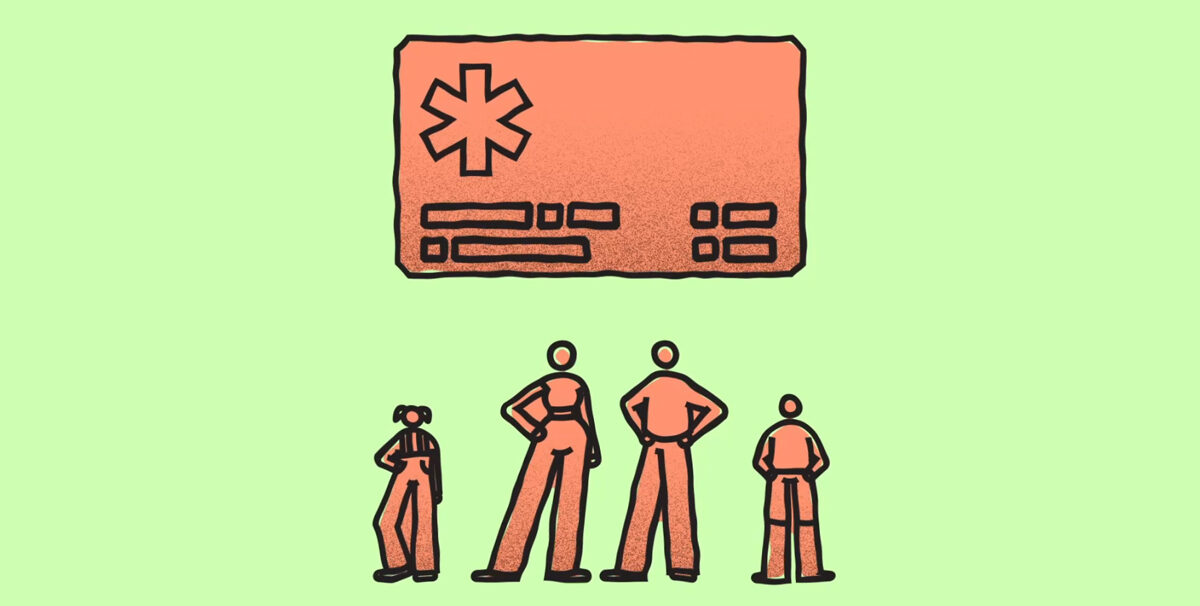More than 29 million people in the United States have diabetes. Of these 29 million people, 95% have Type 2 diabetes, while the remaining 5% have Type 1 diabetes. Both types of diabetes center around the inability to control one’s blood sugar. American Diabetes Month is intended to raise awareness about this serious disease.
While you can’t prevent Type 1 diabetes, you can prevent Type 2 diabetes. Making the following six lifestyle changes can greatly increase your chances of preventing the disease.
- Manage your weight.
- Increase your activity level.
- Talk with your doctor about your risks.
- Monitor your carbohydrate intake.
- Maintain a healthy diet.
- Choose whole grains.
Visit www.diabetes.org to learn more. This month our four Take Action Weeks include:
- What was your blood sugar this year?
- Prevent Diabetes
- Managing Type 2 Diabetes
- Lung Cancer Awareness
What are your numbers?
Knowing your blood pressure, cholesterol, blood sugar and body mass index (BMI) are extremely vital in determining whether you are at risk for developing major illnesses, such as heart disease and diabetes. If you know your numbers are out of the healthy range, you can take measures to get yourself back into good health.
An unexpected heart attack may be caused by years of living with high cholesterol and extra fat stored in the body. Total cholesterol should be 200 or less. You should also ask your doctor what your HDL cholesterol (good) and LDL cholesterol (bad) levels are. Having high total cholesterol, high LDL or low HDL can put you at risk for a heart attack or stroke. Since there are no symptoms of high cholesterol, it is imperative that you know your numbers.
Blood Pressure
Blood pressure is the amount of force that it takes for your heart to pump blood through your body. High blood pressure, known as hypertension, increases your risk of heart attack, stroke and kidney disease. It can also cause damage to your brain, eyes and arteries. Normal blood pressure should be less than 120 over 80.Much like cholesterol, there are no symptoms of high blood pressure, so knowing your numbers is key to good health.
Blood Sugar
Glucose is sugar that is stored in the blood as your main source of energy. If your glucose levels are too high or too low, you can develop diabetes. Normal blood sugar level is under 100 when using the FPG test. Since diabetes can strike anyone of any age, it is essential that you know your blood sugar number. This is especially true if you experience any of the following symptoms of diabetes: frequent urination, extreme hunger, thirst, unusual weight loss, increased fatigue or blurry vision. If diabetes is left untreated, it can lead to heart disease, blindness, amputation of the arms or legs and/or kidney disease.
Body Mass Index
BMI measures your weight in relation to your height. This measurement indicates whether your weight falls within abnormal, healthy range. A BMI over 25 indicates that you are overweight and a BMI over 30 indicates that you are obese. Carrying extra weight can lead to high cholesterol, heart disease, diabetes and other chronic conditions. To figure out your BMI, use the calculator at www.nhlbi.nih.gov/guidelines/obesity/BMI/bmicalc.htm.
Prediabetes: Don’t Let It Lead To Type 2
Before being diagnosed with Type 2 diabetes, most people develop “prediabetes,” a serious medical condition in which blood glucose levels are higher than normal. People with prediabetes often have no signs or symptoms, or don’t recognize them because they develop slowly over a period of time.
Risk Factors
If you are overweight and age 45 or older–You should be checked for prediabetes during your next routine medical office visit.
If your weight is normal and you are over age 45–You should ask your doctor during a routine office visit if testing is appropriate.
If you are under age 45 and overweight–Your doctor should recommend testing if you have any other risk factors for diabetes, including:
- High blood pressure
- Low HDL cholesterol and high triglycerides
- History of gestational diabetes or delivering a baby weighing 9 pounds or more
- Family history of diabetes
- Belonging to an ethnic or minority group at high risk for diabetes, including African-Americans, Latinos, Native Americans, or Asian Americans/Pacific Islanders
Screening & Diagnosis
Screening guidelines for prediabetes and Type 2 diabetes are as follows:
- Fasting blood glucose of 100 mg/dl or lower is considered normal.
- Fasting blood glucose elevated to 100 -125 mg/dl indicates pre-diabetes.
- Fasting blood glucose elevated to 126 mg/dl or higher indicates diabetes.
If your blood glucose levels are in the normal range, follow-up tests should occur every three years. If your results indicate prediabetes, you should be re-tested every one to two years after your diagnosis.
Prevention & Treatment
If diagnosed with prediabetes, you can and should do something about it. Studies show that people with this condition can prevent or delay the development of Type 2 diabetes through lifestyle changes, including:
- Moderate weight loss (reducing total body weight by 7 percent)
- Regular exercise (30 minutes a day, 5 days a week)
For some people with prediabetes, early enough intervention can actually return elevated blood glucose levels to the normal range.
Managing Type 2 Diabetes
Between 90% and 95% of those diagnosed with diabetes in the United States have Type 2 diabetes. Formerly called adult onset diabetes or noninsulin-dependent diabetes, the condition is increasing at an alarming rate due to the current obesity levels in the United States.
About the Condition
Type 2 diabetes causes the body to resist insulin, a hormone that controls the absorption of sugar. As a result, a normal glucose level cannot be maintained. People can develop Type 2 diabetes at any age, including during childhood years. Unlike Type 1 diabetes, Type 2 is usually preventable with a balanced diet and exercise. Unfortunately, once present, Type 2 diabetes cannot be cured, and can be life-threatening if left untreated.
Causes and Risk Factors
While it is not completely understood why some people develop Type 2 diabetes, research has shown the following factors significantly increase the risk of developing the disease.
- Obesity
- Physical inactivity
- Genetics
- High blood pressure
- Abnormal cholesterol levels
- Ethnicity (being African American, Pacific Islander, Hispanic/Latino, American Indian or Asian American)
- Age (risk increases as you get older, especially after age 45)
- Having pre-diabetes—left untreated, it likely will develop into Type 2 diabetes
- Previously or currently having gestational diabetes
- Giving birth to a baby weighing more than 9 pounds
Symptoms
Consult your doctor if you’re concerned about diabetes, or if the following symptoms appear:
- Increased thirst and frequent urination
- Extreme hunger
- Weight loss despite eating more than usual
- Blurred vision
- Fatigue
- Slow-healing sores or frequent infections
- Patches of dark skin in folds and creases of the body
Testing
It is recommended that anyone 45 years of age or older consider getting tested for diabetes, as well as those under age 45 who are overweight. The following tests are used for diabetes diagnoses:
- Fasting plasma glucose test: This measures blood glucose after abstaining from eating for at least eight hours.
- Oral glucose tolerance test: This measures blood glucose after at least eight hours without eating and two hours after drinking a glucose-containing beverage.
- Random plasma glucose test: During this test, the physician checks blood glucose no matter when the last meal was consumed. This test is administered in addition to an assessment of symptoms such as increased thirst and urination, and unexplained weight loss.
Positive results should be confirmed by repeating the fasting plasma glucose test or oral glucose tolerance test on another day.
Management
Those diagnosed with Type 2 diabetes need to follow a stringent daily plan to ensure that blood glucose is kept in the proper range, such as: •Following a specific meal plan
- Being physically active
- Taking prescribed medication, including insulin if needed
- Testing blood glucose as recommended
- Keeping daily records of blood glucose levels and any unusual issues that come up during the day
Dangers and Complications
Left uncontrolled, there are several serious complications that can arise from type 2 diabetes, such as:
- Heart and blood vessel disease
- Blindness or eye disease
- Kidney failure
- Nerve damage
- Osteoporosis
- Skin infections
- Alzheimer’s disease
- Gum infections
Prevention
Take the following precautions to help avoid developing Type 2 diabetes:
- Get a routine diabetes screening.
- Make healthy food choices—select foods low in fat like fruits, vegetables and whole grains.
- Monitor salt intake and choose foods with a low salt content.
- Get more physical activity—aim for 30 to 60 minutes of moderate physical activity a day. If a long workout is not possible, break it up into smaller sessions spread throughout the day.
- Lose excess weight—even a loss of 10 pounds may lower the risk of developing Type 2 diabetes.
For more information, contact the American Diabetes Association at www.diabetes.org.
Lung Cancer
More people die from lung cancer than from any other type of cancer. While many people think that smokers are the only ones at risk, lung cancer affects smokers and nonsmokers alike. Exposure to asbestos and radiation, as well as smoking tobacco products or exposure to second-hand smoke, contribute to the disease.
Causes and Risk Factors
Smoking is the leading risk factor for developing lung cancer, and is accountable for almost 90 percent of all lung cancer cases. A smoker’s risk for getting lung cancer is 30 times greater than the risk of a non-smoker. In addition to smoking, lung cancer can be caused by several factors, including exposure to:
- Radon
- Radiation
- Pollution
- Lung disease
- Asbestos
- Secondhand smoke
Signs and Symptoms
Catching lung cancer early gives you the best chance of survival, and recognizing the symptoms is the first step. The most common symptom is a persistent cough that worsens over time. Other common symptoms associated with lung cancer include:
- Repeat occurrences of infections such as pneumonia or bronchitis
- Fever for no apparent reason
- Swelling of the neck and face
- Loss of weight due to a decrease in appetite
- Fatigue
Prevention
Researchers continue to study the causes of lung cancer and ways to prevent it. Smoking tobacco products remains the number-one cause of lung cancer, while not smoking remains the number-one preventative measure. Quitting smoking at any age can lower your chances of getting lung cancer.
Survival
The lung cancer survival rate has consistently hovered around 15 percent since 1995. With several new drug developments and earlier detection rates, however, survival rates of lung cancer patients are rising. Keep an eye out for the symptoms, and consider having a CT scan to aid in early detection.





